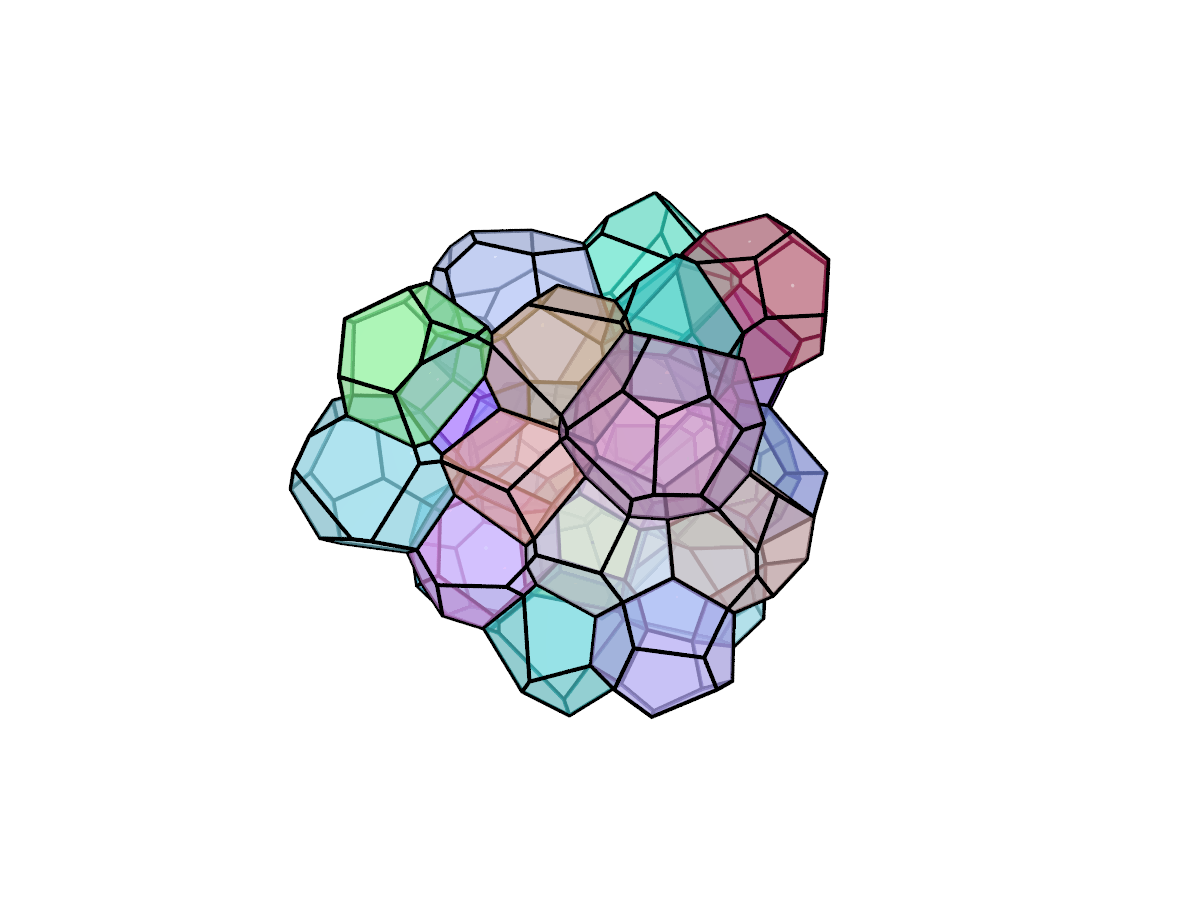Tessellation¶
Main goal is to divide domain into polyhedral cells so that it resembles real foam.
Inputs¶
Only required input is the *Packing.csv file generated by packing (see
Sphere packing).
Execution¶
Tessellation can be achieved by running:
foamgen -t
This produces tessellation similar to this one (you need to add
--tess.render flag if you want to create the image):

Outputs¶
The main output is the *Tessellation.geo file, which contains the the
tessellated foam in gmsh CAD format.
The *Tessellation.gnu and *Tessellation.tess are formats for gnuplot
and POV-Ray visualiation, respectively. The *.stcell, *.stedge,
*.stface, and *.stver contain statistics about cells, edges, faces, and
vertices, respectively.
Theory¶
The weighted Voronoi tessellation (also known as Laguerre tessellation) is used to divide the periodic domain into cells. The packed spheres are used as seeds and weights for the tessellation algorithm. Mathematically, Laguerre tessellation can be written as
where \(C\) is the cell, \(S\) is the seed and \(w\) is the weight.